Fresh produce in space - what's not to like!
You are using an out of date browser. It may not display this or other websites correctly.
You should upgrade or use an alternative browser.
You should upgrade or use an alternative browser.
Great News for a Mars Colony!
- Thread starter lotr10
- Start date
Here's a cool article on what the design of a moon base will look like:
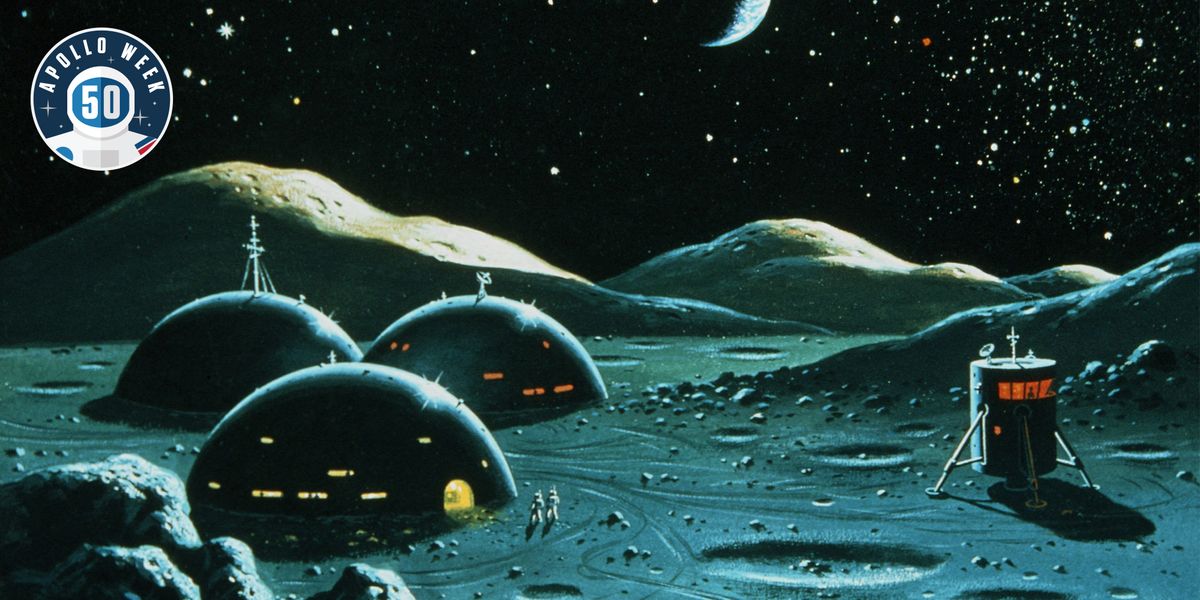
 www.popularmechanics.com
www.popularmechanics.com
The article provides 6 key elements of a moon base. Here's #2:
Moonies Will Dwell in Hobbit Holes
Due to extreme temperatures, no oxygen, the threat of meteorites, and the constant barrage of radiation from the sun, our lunar crib will have to be built like a castle. Early landers will become shelters buried in craters and covered with a protective layer of moon rocks and dust by robotic excavators. Inhabitants might access the habitat through around airlock dug into a mound, an aesthetic that Bilbo Baggins could appreciate.

What Would a 21st Century Moon Base Look Like?
Humanity has never seen the settlement of another world. Here's what it might look like.
The article provides 6 key elements of a moon base. Here's #2:
Moonies Will Dwell in Hobbit Holes
Due to extreme temperatures, no oxygen, the threat of meteorites, and the constant barrage of radiation from the sun, our lunar crib will have to be built like a castle. Early landers will become shelters buried in craters and covered with a protective layer of moon rocks and dust by robotic excavators. Inhabitants might access the habitat through around airlock dug into a mound, an aesthetic that Bilbo Baggins could appreciate.
This might be the most important space based research going on today:

 phys.org
phys.org
All atoms and molecules emit distinctive spectral lines across the spectrum, the details of which depend on the internal structures of the species (for example, the vibration and rotation properties of molecules) and how they are excited by their environments. Measurements of the features' brightnesses, relative intensities, and shapes enable astronomers, at least in principle, to reconstruct most of the essential properties of these environments, including species abundances, temperatures, densities, and motions. But in order to be successful, scientists need to know quantitatively exactly how the temperature, density, and so forth, affect the excitation of each atom or molecule, and then how each species emits light in response. A collision between oxygen and nitrogen molecules, for example, will affect an oxygen molecule differently than its collision with hydrogen.

Modeling exoplanet atmospheres
All atoms and molecules emit distinctive spectral lines across the spectrum, the details of which depend on the internal structures of the species (for example, the vibration and rotation properties of molecules) and how they are excited by their environments. Measurements of the features'...
All atoms and molecules emit distinctive spectral lines across the spectrum, the details of which depend on the internal structures of the species (for example, the vibration and rotation properties of molecules) and how they are excited by their environments. Measurements of the features' brightnesses, relative intensities, and shapes enable astronomers, at least in principle, to reconstruct most of the essential properties of these environments, including species abundances, temperatures, densities, and motions. But in order to be successful, scientists need to know quantitatively exactly how the temperature, density, and so forth, affect the excitation of each atom or molecule, and then how each species emits light in response. A collision between oxygen and nitrogen molecules, for example, will affect an oxygen molecule differently than its collision with hydrogen.
Some more good news on the space exploration front: the solar sail has deployed!

 www.space.com
www.space.com
A spacecraft the size of a loaf of bread has finally turned itself into a solar sail.
On Tuesday (July 23) at about 2:47 p.m. EDT (1847 GMT), a motor onboard the small LightSail 2 cubesat began deploying the mission's 344-square-foot (32-square-meter) solar sail, which is about the size of a boxing ring. LightSail 2 is the passion project of The Planetary Society, and the space advocacy organization wants to demonstrate that solar surfing is a viable propulsion technique for spacecraft.
"We're very excited to be past this huge milestone," Jennifer Vaughn, Chief Operating Officer at The Planetary Society said during a livestream of the deployment from the spacecraft's control center in California. "We now have a sail. It's time to go sailing! … We now start the very difficult process of sailing in space."

LightSail 2 Deploys Solar Sail to Surf the Sun's Rays
Today, a bread-loaf size spacecraft finally turned itself into a solar sail.
A spacecraft the size of a loaf of bread has finally turned itself into a solar sail.
On Tuesday (July 23) at about 2:47 p.m. EDT (1847 GMT), a motor onboard the small LightSail 2 cubesat began deploying the mission's 344-square-foot (32-square-meter) solar sail, which is about the size of a boxing ring. LightSail 2 is the passion project of The Planetary Society, and the space advocacy organization wants to demonstrate that solar surfing is a viable propulsion technique for spacecraft.
"We're very excited to be past this huge milestone," Jennifer Vaughn, Chief Operating Officer at The Planetary Society said during a livestream of the deployment from the spacecraft's control center in California. "We now have a sail. It's time to go sailing! … We now start the very difficult process of sailing in space."
In case you get into an argument with an anti-space program type who thinks we're wasting our money on this stuff:

 www.popularmechanics.com
www.popularmechanics.com
Here's one of several examples of a cool spin off:
Innovation: Nike Airs
Invention Date: 1977, when former NASA engineer Marion Franklin Rudy brought a unique production idea to the shoe company.
Moon Use: A process known as “blow rubber molding,” where hollowed-out plastic parts are formed and filled with compressed, dense gases, is used to provide extra comfort and protection in Apollo-era astronaut helmets.
Current Use: First premiering in 1978 in the Nike Air Tailwind, Rudy helped Nike develop a shoe with a hollowed-out heel filled with compressed air providing extra cushioning, shock-absorbing, and buoyancy. Nike Airs remain a bestseller to this day.

How Our Trip to the Moon Pushed Innovation Here on Earth
You can thank NASA for the Dustbuster, memory foam mattresses, and more.
Here's one of several examples of a cool spin off:
Innovation: Nike Airs
Invention Date: 1977, when former NASA engineer Marion Franklin Rudy brought a unique production idea to the shoe company.
Moon Use: A process known as “blow rubber molding,” where hollowed-out plastic parts are formed and filled with compressed, dense gases, is used to provide extra comfort and protection in Apollo-era astronaut helmets.
Current Use: First premiering in 1978 in the Nike Air Tailwind, Rudy helped Nike develop a shoe with a hollowed-out heel filled with compressed air providing extra cushioning, shock-absorbing, and buoyancy. Nike Airs remain a bestseller to this day.
Wow, that was close!
"I was stunned," he said. "This was a true shock."
This asteroid wasn't one that scientists had been tracking and it had seemingly appeared from "out of nowhere," Michael Brown, a Melbourne-based observational astronomer, told The Post. According to data from NASA, the craggy rock was large, roughly 110 yards wide, and moving quickly along a path that brought it within about 45,360 miles of Earth. That's about one-fifth of the distance to the moon and what Duffy considers "uncomfortably close."
"It snuck up on us pretty quickly," said Brown, an associate professor with Australia's Monash University's School of Physics and Astronomy. "People are only sort of realizing what happened pretty much after it's already flung past us."
The asteroid's presence was discovered only earlier this week by separate astronomy teams in Brazil and the United States. Information about its size and path was announced just hours before it rocketed past Earth, Brown said.
"It shook me out my morning complacency," he said. "It's probably the largest asteroid to pass this close to Earth in quite a number of years."
And look what they call this kind of asteroid:
Duffy said astronomers have a nickname for the kind of space rock that just came so close to Earth: "city-killer asteroids." If the asteroid had struck Earth, most of it would have likely reached the ground resulting in devastating damage, Brown said.
"It would have gone off like a very large nuclear weapon" with enough force to destroy a city, he said. "Many megatons, perhaps in the ballpark of 10 megatons of TNT, so something not to be messed with."
In 2013 a significantly smaller meteor, about 22 yards across, broke up over the Russian city of Chelyabinsk and unleashed an intense shock wave that collapsed roofs, shattered windows and left about 1,200 people injured. The last space rock to strike Earth similar in size to Asteroid 2019 OK was more than a century ago, Brown said. That asteroid, known as the Tunguska event, caused an explosion that leveled nearly 500,000 square acres of forest land in Siberia.
"I was stunned," he said. "This was a true shock."
This asteroid wasn't one that scientists had been tracking and it had seemingly appeared from "out of nowhere," Michael Brown, a Melbourne-based observational astronomer, told The Post. According to data from NASA, the craggy rock was large, roughly 110 yards wide, and moving quickly along a path that brought it within about 45,360 miles of Earth. That's about one-fifth of the distance to the moon and what Duffy considers "uncomfortably close."
"It snuck up on us pretty quickly," said Brown, an associate professor with Australia's Monash University's School of Physics and Astronomy. "People are only sort of realizing what happened pretty much after it's already flung past us."
The asteroid's presence was discovered only earlier this week by separate astronomy teams in Brazil and the United States. Information about its size and path was announced just hours before it rocketed past Earth, Brown said.
"It shook me out my morning complacency," he said. "It's probably the largest asteroid to pass this close to Earth in quite a number of years."
And look what they call this kind of asteroid:
Duffy said astronomers have a nickname for the kind of space rock that just came so close to Earth: "city-killer asteroids." If the asteroid had struck Earth, most of it would have likely reached the ground resulting in devastating damage, Brown said.
"It would have gone off like a very large nuclear weapon" with enough force to destroy a city, he said. "Many megatons, perhaps in the ballpark of 10 megatons of TNT, so something not to be messed with."
In 2013 a significantly smaller meteor, about 22 yards across, broke up over the Russian city of Chelyabinsk and unleashed an intense shock wave that collapsed roofs, shattered windows and left about 1,200 people injured. The last space rock to strike Earth similar in size to Asteroid 2019 OK was more than a century ago, Brown said. That asteroid, known as the Tunguska event, caused an explosion that leveled nearly 500,000 square acres of forest land in Siberia.
Planets, planets and more planets!

 phys.org
phys.org
TESS began hunting for exoplanets (or worlds orbiting distant stars) in the southern sky in July of 2018, while also collecting data on supernovae, black holes and other phenomena in its line of sight. Along with the planets TESS has discovered, the mission has identified over 850 candidate exoplanets that are waiting for confirmation by ground-based telescopes.

NASA's TESS mission completes first year of survey, turns to northern sky
NASA's Transiting Exoplanet Survey Satellite (TESS) has discovered 21 planets outside our solar system and captured data on other interesting events occurring in the southern sky during its first year of science. TESS has now turned its attention to the Northern Hemisphere to complete the most...
TESS began hunting for exoplanets (or worlds orbiting distant stars) in the southern sky in July of 2018, while also collecting data on supernovae, black holes and other phenomena in its line of sight. Along with the planets TESS has discovered, the mission has identified over 850 candidate exoplanets that are waiting for confirmation by ground-based telescopes.
It's amazing how routine this has become. A private company is supplying the space station.
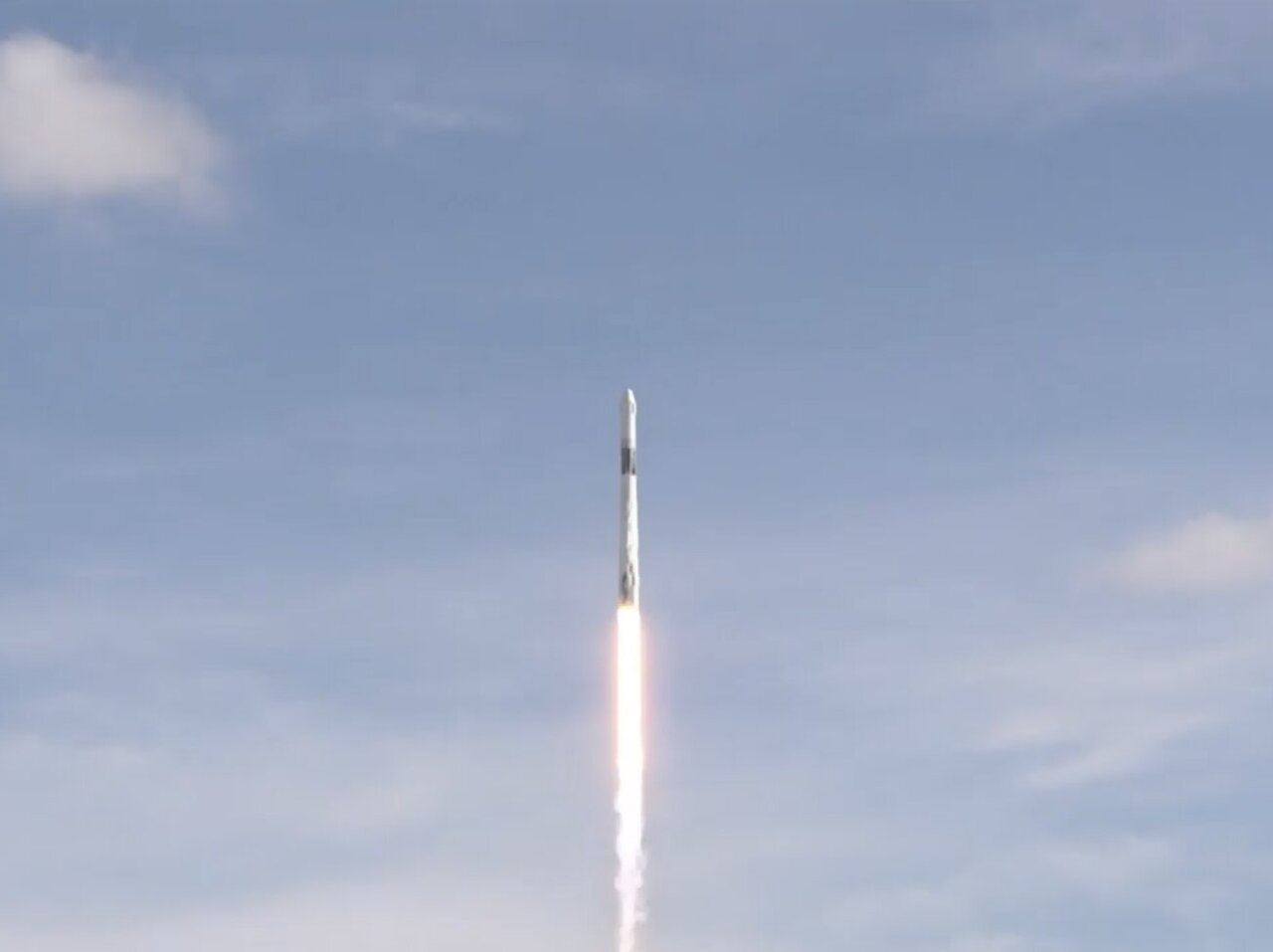
 phys.org
phys.org
The spacecraft launched on a Falcon 9 rocket from Space Launch Complex 40 at Cape Canaveral Air Force Station, and is scheduled to arrive at the orbiting laboratory Saturday, July 27. Coverage of the spacecraft's approach and arrival will begin at 8:30 a.m. on NASA Television and the agency's website.
Dragon will join three other spacecraft currently at the space station. Expedition 60 Flight Engineers Nick Hague and Christina Koch of NASA will use the station's robotic arm, Canadarm2, to grab, or grapple, Dragon around 10 a.m. Coverage of robotic installation to the Earth-facing port of the Harmony module will begin at 12 p.m.

SpaceX dragon en route to space station with NASA science, cargo
A SpaceX Dragon cargo spacecraft is on its way to deliver the second commercial crew docking port and about 5,000 pounds of science investigations and supplies for the International Space Station after a 6:01 p.m. EDT Thursday launch from Florida.
The spacecraft launched on a Falcon 9 rocket from Space Launch Complex 40 at Cape Canaveral Air Force Station, and is scheduled to arrive at the orbiting laboratory Saturday, July 27. Coverage of the spacecraft's approach and arrival will begin at 8:30 a.m. on NASA Television and the agency's website.
Dragon will join three other spacecraft currently at the space station. Expedition 60 Flight Engineers Nick Hague and Christina Koch of NASA will use the station's robotic arm, Canadarm2, to grab, or grapple, Dragon around 10 a.m. Coverage of robotic installation to the Earth-facing port of the Harmony module will begin at 12 p.m.
File these 2 articles under the heading - Would Make Great Horror Movies!

 www.space.com
www.space.com
It's too weird to make up: NASA fed some of its precious Apollo 11 lunar samples to cockroaches. And dumped it in fishbowls. And injected mice with it. No, really.
NASA still has most of the moon rocks the Apollo 11 crew brought home, but a small fraction of the astronaut's bounty was used up in a little-known but vitally important set of experiments that ensured lunar samples were safe to keep here on Earth.
I never knew this. I get what they were trying to do but it's still pretty weird.

 www.space.com
www.space.com
NASA and the European Space Agency (ESA) are working together on a highly anticipated Mars sample-return mission, which advocates say is the logical next step in our study of the Red Planet and its life-hosting potential.
"We need to bring [Martian] materials back and bring them into our laboratories," Brian Muirhead, of NASA's Jet Propulsion Laboratory in Pasadena, California, said during a presentation with NASA's Future In-Space Operations (FISO) working group last month.
What could possibly go wrong?

NASA Fed Apollo 11 Moon Rocks to Cockroaches (And Then Things Got Even Weirder)
Yes, NASA really did feed some of its precious moon rocks to house flies and plants.
It's too weird to make up: NASA fed some of its precious Apollo 11 lunar samples to cockroaches. And dumped it in fishbowls. And injected mice with it. No, really.
NASA still has most of the moon rocks the Apollo 11 crew brought home, but a small fraction of the astronaut's bounty was used up in a little-known but vitally important set of experiments that ensured lunar samples were safe to keep here on Earth.
I never knew this. I get what they were trying to do but it's still pretty weird.

Bringing Pieces of Mars to Earth in 2031: How NASA and Europe Plan to Do It
The Red Planet bits will be here by 2031, if all goes according to plan.
NASA and the European Space Agency (ESA) are working together on a highly anticipated Mars sample-return mission, which advocates say is the logical next step in our study of the Red Planet and its life-hosting potential.
"We need to bring [Martian] materials back and bring them into our laboratories," Brian Muirhead, of NASA's Jet Propulsion Laboratory in Pasadena, California, said during a presentation with NASA's Future In-Space Operations (FISO) working group last month.
What could possibly go wrong?
eastisbest
Well-known member
Yep, saw that documentary. Won't end well for the NASA guy.
Snowball planets might be able to support life!

 phys.org
phys.org
Scientists have long thought snowball planets—Earthlike planets with oceans frozen to the equator—were hostile to life because of the extreme cold. But new research in AGU's Journal of Geophysical Research: Planets finds some snowball planets might have areas of land near their equators that reach livable temperatures.
"You have these planets that traditionally you might consider not habitable and this suggests that maybe they can be," said Adiv Paradise, an astronomer and physicist at the University of Toronto and lead author of the new study.
Given that life thrives in the Arctic & Antarctica why not on a snowball planet? As the article points out the Earth has experienced at least 3 snowball periods and it wasn't able to kill off life.

Study suggests frozen Earthlike planets could support life
Icy planets once thought too cold to support life might have livable land areas above freezing, challenging the typical assumption of what kinds of planets might be habitable, a new study suggests.
Scientists have long thought snowball planets—Earthlike planets with oceans frozen to the equator—were hostile to life because of the extreme cold. But new research in AGU's Journal of Geophysical Research: Planets finds some snowball planets might have areas of land near their equators that reach livable temperatures.
"You have these planets that traditionally you might consider not habitable and this suggests that maybe they can be," said Adiv Paradise, an astronomer and physicist at the University of Toronto and lead author of the new study.
Given that life thrives in the Arctic & Antarctica why not on a snowball planet? As the article points out the Earth has experienced at least 3 snowball periods and it wasn't able to kill off life.
For me this is the most interesting part of the payload:
The Planetary Society's LightSail crowd-funded spacecraft will attempt to become the first orbiting spacecraft to be propelled solely by sunlight. It will be released next week from its temporary perch on a spacecraft and opened a week later.
"Our #LightSail2 is up and on its way," tweeted Bill Nye, the society's chief executive officer.
It's the society's third crack at solar sailing: The first was lost in a Russian rocket failure in 2005, while the second had a successful test flight in 2015.
The solar sail is working!

Solar Sail Success! LightSail 2 Is Officially Soaring on Sunlight
Bill Nye thinks it's "romantic."
After LightSail 2 successfully deployed its solar sail last week, mission managers remotely optimized the craft's orientation. With these small changes, the craft began raising its orbit above our planet, raising its apogee, or orbital high point. Within the past four days, the craft has raised its apogee about 1.2 miles (2 kilometers). The mission team behind the craft confirmed that this orbital raising could be due to nothing other than successful solar sailing, or propulsion from photons, particles that transmit light, from the sun.
The Planetary Society’s LightSail 2 captured this picture of Earth’s limb on July 6, 2019, at 12:41 a.m. EDT from a camera mounted on its dual-sided solar panels. The spacecraft was headed into orbital sunset at the time, and the sun is visible to the right. The photo is unmodified and shows a number of lens flare artifacts caused by sunlight scattering around the camera optics. LightSail 2’s dual fisheye cameras have fields of view of about 180 degrees, causing the arcs in the corners and some distortion.
With this accomplishment, LightSail 2 becomes the first spacecraft to be propelled by solar sailing in Earth orbit; the first small spacecraft to be propelled by solar sailing; and the second-ever spacecraft, after Japan's IKAROS mission, to successfully use solar sailing, The Planetary Society said.
Some day fleets of ships powered by light sails will traverse the solar system.
Public/private partnerships - what's not to love?
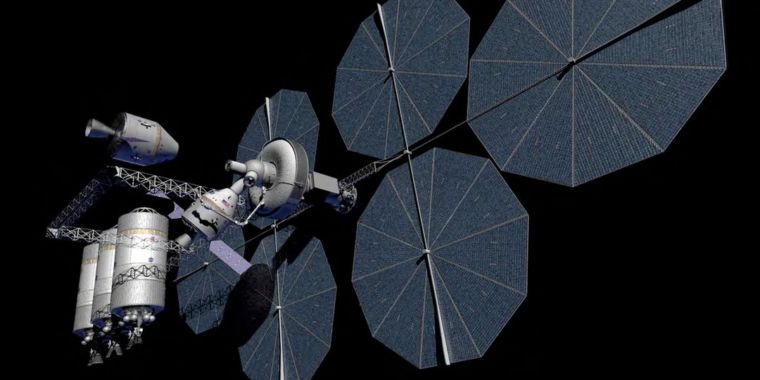
 arstechnica.com
arstechnica.com
On Tuesday afternoon, NASA announced 19 new partnerships with 10 US companies to help bring more cutting-edge technologies closer to production use in spaceflight. There were a lot of useful engineering ideas here, such as precision landing systems and robotic plant farms, but perhaps the most intriguing one involved the rocket company SpaceX and two of NASA's field centers—the Glenn Research Center in Ohio and the Marshall Space Flight Center in Alabama.
"SpaceX will work with Glenn and Marshall to advance technology needed to transfer propellant in orbit, an important step in the development of the company’s Starship space vehicle," the NASA news release states. This is a significant announcement for reasons both technical and political.
For its part, SpaceX welcomed the opportunity to help advance NASA's Artemis Program, which NASA hopes will send humans to the Moon by 2024 (and, later on, to Mars). “We believe SpaceX’s fleet of advanced rockets and spacecraft, including Falcon Heavy and Starship, are integral to accelerating NASA’s lunar and Mars plans," a company spokesperson told Ars.

NASA agrees to work with SpaceX on orbital refueling technology
"The civil servants at Marshall and at Glenn are very talented in this area."
On Tuesday afternoon, NASA announced 19 new partnerships with 10 US companies to help bring more cutting-edge technologies closer to production use in spaceflight. There were a lot of useful engineering ideas here, such as precision landing systems and robotic plant farms, but perhaps the most intriguing one involved the rocket company SpaceX and two of NASA's field centers—the Glenn Research Center in Ohio and the Marshall Space Flight Center in Alabama.
"SpaceX will work with Glenn and Marshall to advance technology needed to transfer propellant in orbit, an important step in the development of the company’s Starship space vehicle," the NASA news release states. This is a significant announcement for reasons both technical and political.
For its part, SpaceX welcomed the opportunity to help advance NASA's Artemis Program, which NASA hopes will send humans to the Moon by 2024 (and, later on, to Mars). “We believe SpaceX’s fleet of advanced rockets and spacecraft, including Falcon Heavy and Starship, are integral to accelerating NASA’s lunar and Mars plans," a company spokesperson told Ars.
Following the lead of Icarus:
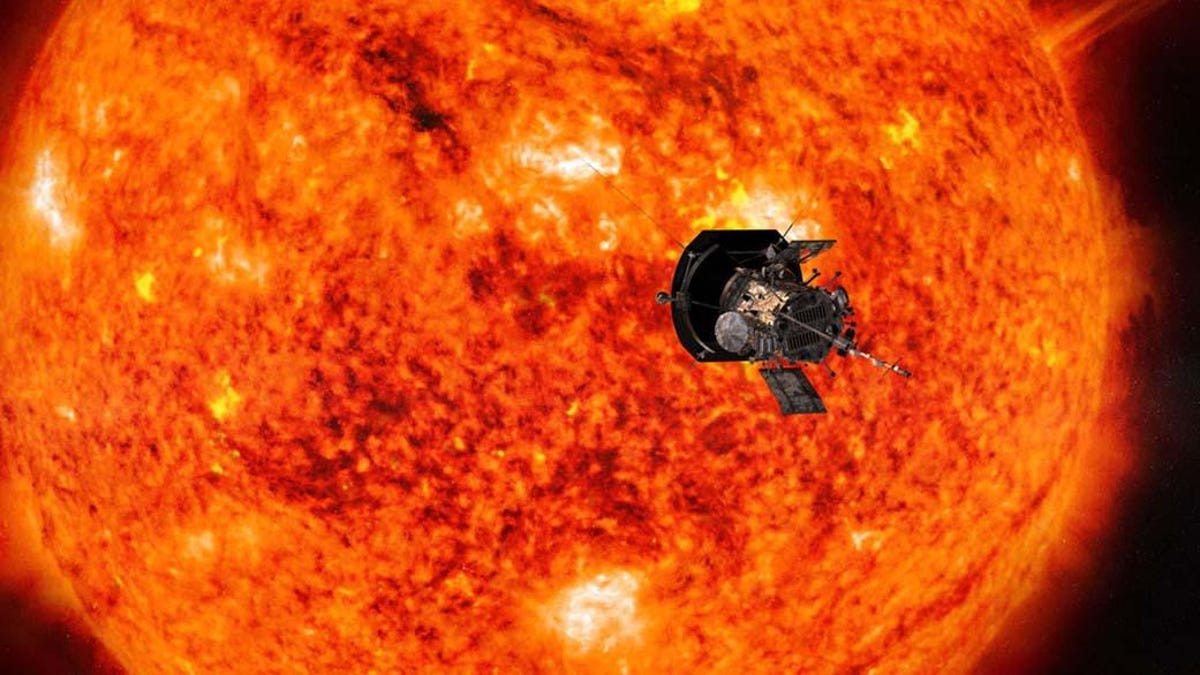
 www.cnet.com
www.cnet.com
We've never had a probe this close to the sun, so the measurements that scientists on the ground are now evaluating have never been encountered before. Parker's four instruments are able to measure particles in the sun's atmosphere, its magnetic fields, the solar wind and how electrons, protons and ions are spilling out of the hot ball of plasma. The large cross-section of new data will greatly increase our knowledge about the sun and its effects across the entire solar system.
The probe's next meeting with the sun will start on Aug. 27, and its closest approach will come on Sept. 1. On Dec. 26, it will fly by Venus for the second time, gathering speed as it prepares to cozy up to the sun in an even closer orbit.

NASA's mission to 'touch the sun' surprises during first data delivery
The Parker Solar Probe has swung past the sun twice, downloading more new science data than expected.
We've never had a probe this close to the sun, so the measurements that scientists on the ground are now evaluating have never been encountered before. Parker's four instruments are able to measure particles in the sun's atmosphere, its magnetic fields, the solar wind and how electrons, protons and ions are spilling out of the hot ball of plasma. The large cross-section of new data will greatly increase our knowledge about the sun and its effects across the entire solar system.
The probe's next meeting with the sun will start on Aug. 27, and its closest approach will come on Sept. 1. On Dec. 26, it will fly by Venus for the second time, gathering speed as it prepares to cozy up to the sun in an even closer orbit.
Now this is both strange and cool:

 www.upi.com
www.upi.com
"This planet is a prototype for ultra-hot Jupiters. These planets are so heavily irradiated by their host stars, they're almost like stars themselves," Drake Deming, professor of astronomy at the University of Maryland, said in a news release. "The planet is being evaporated by its host star to the point that we can see metal atoms escaping the upper atmosphere where they can interact with the planet's magnetic field. This presents an opportunity to observe and understand some very interesting physics."

Heavy metal gases observed streaming from football-shaped exoplanet - UPI.com
Astronomers have detected heavy metal gases streaming away from an extremely hot, football-shaped exoplanet located 900 light-years from Earth.
 www.upi.com
www.upi.com
"This planet is a prototype for ultra-hot Jupiters. These planets are so heavily irradiated by their host stars, they're almost like stars themselves," Drake Deming, professor of astronomy at the University of Maryland, said in a news release. "The planet is being evaporated by its host star to the point that we can see metal atoms escaping the upper atmosphere where they can interact with the planet's magnetic field. This presents an opportunity to observe and understand some very interesting physics."
Crusaders
Moderator
Human bodies evolved to live on Earth, so it's not surprising that space throws us for a loop. Without gravity, astronauts on the International Space Station lose muscle and bone (despite exercising hours each day), start to see poorly, and develop wacky immune systems. And the rogue particles that zip through deep space outside of Earth's protective magnetic bubble threaten to upset the delicate functioning of the human mind as well.
Scientists have known for years that in addition to damaging DNA, the particles of radiation found in deep space also wreak havoc on brains. All of that research, however, came from using a particle accelerator to blast rodents with months- to years-worth of radiation in the span of a few minutes. The first study to test mice under realistic space-like conditions—with the help of a new facility capable of delivering radiation at a slow drip—confirms that neutron and photon particles significantly disrupt their nervous systems. If humans are similarly sensitive, the study claims, multiple members of a five-person crew would suffer neurological symptoms such as increased anxiety or impaired memory during a multi-year mission to Mars.
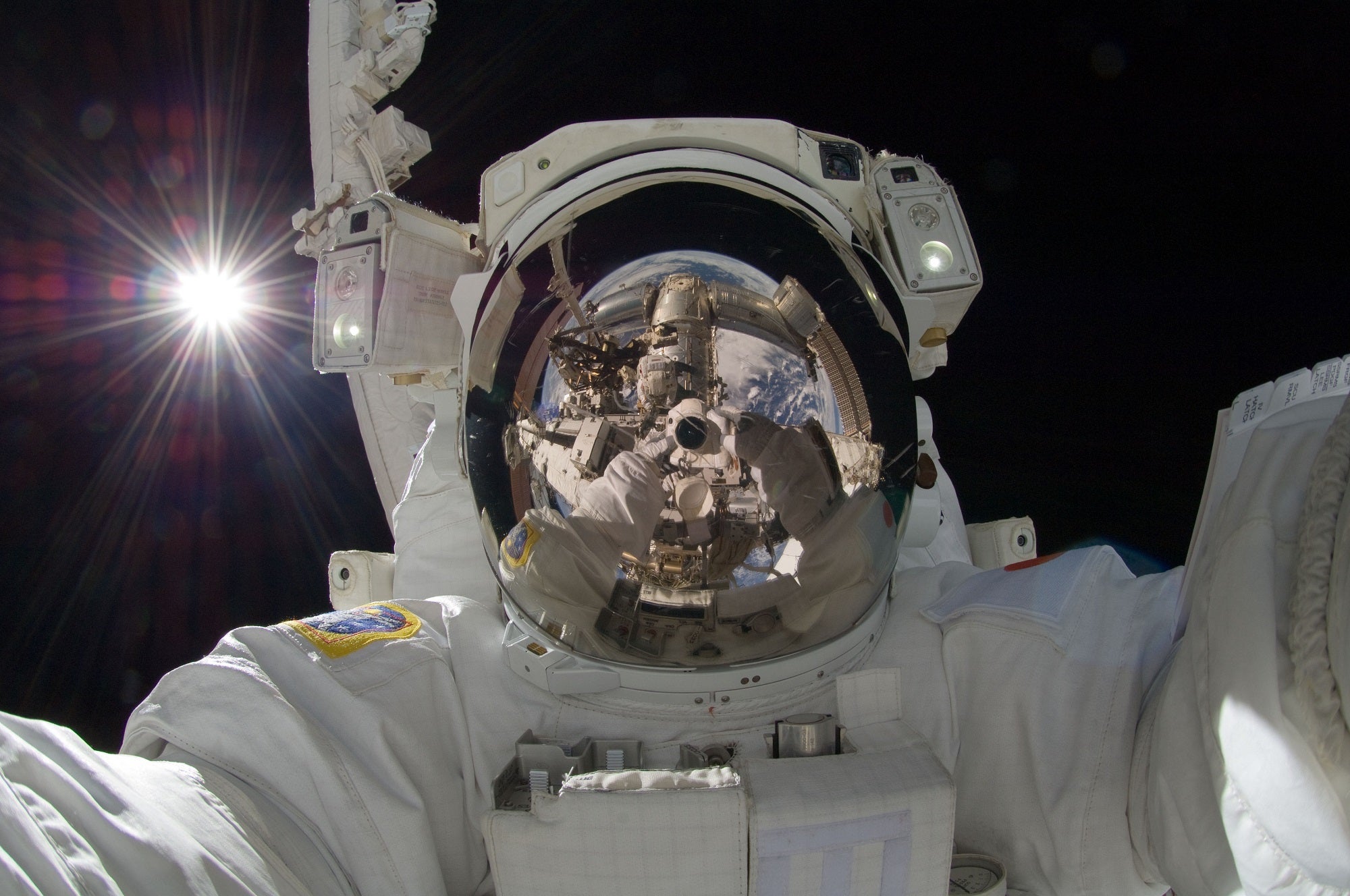
Rodent astronauts suggest trips to Mars will make us anxious, forgetful, and afraid
Human bodies evolved to live on Earth, so it’s not surprising that space throws us for a loop.
 www.popsci.com
www.popsci.com
More possible evidence that humans will not be living outside Earth for very long without bioengineering or some very elaborate and advanced technologies.
Last edited:

Rodent astronauts suggest trips to Mars will make us anxious, forgetful, and afraid
Human bodies evolved to live on Earth, so it’s not surprising that space throws us for a loop.www.popsci.com
More possible evidence that humans will not be living outside Earth for very long without bioengineering or some very elaborate and advanced technologies.
It's going to be a big challenge that's for sure but I'm confident we'll overcome it. Bioengineering of our body's is in its infancy. Over the next century it's going to take off and I suspect we would be stunned at how effective it is at allowing us to overcome everything from radiation to lack of gravity.
An Ohio State scientist tells us how Earth will one day have the nasty weather of Venus:

 www.space.com
www.space.com
But four and a half billion years ago, our sun was different. It was smaller and dimmer. As stars like our sun age, they steadily grow brighter. So back then Venus was firmly planted in the habitable zone, the region of the solar system that can support liquid water on the surface of a planet without it being too hot or too cold.
But as the sun aged, that habitable zone steadily moved outward. And as Venus approached the inner edge of that zone, things started to go haywire.
As the temperatures rose on Venus, the oceans began to evaporate, dumping a lot of water vapor into the atmosphere. This water vapor was very good at trapping heat, which further increased the surface temperatures, which caused the oceans to evaporate even more, which caused even more water vapor to get in the atmosphere, which trapped even more heat, and so on and so on as things spiraled out of control.
Eventually, Venus became a runaway greenhouse with all the water dumped into the atmosphere trapping as much heat as possible, with the surface temperatures continuing to skyrocket.
The liquid water that had been on the surface helped keep the tectonic plates nice and flexible, in a sense adding lubrication to the process of plate tectonics. But without the oceans, plate activity ground to a halt, locking the surface of Venus in place. Plate tectonics play a crucial role in regulating the amount of carbon dioxide in the atmosphere. Essentially, carbon binds to elements in dirt and rocks, and those dirt and rocks eventually get buried far beneath the surface over the course of millions of years as the plates rub up against each other and sink below each other.
What made this article interesting to me was that it was NOT a global warming alarmist paper in which the author was warning us that if we didn't stop burning fossil fuels our future would resemble Venus. Rather it pointed out two factors driving the Venus greenhouse effect:
1) The sun brightening as it grew older
2) The locking in place of plate tectonics as a result of losing all the liquid water
The impact of extraterrestrial factors on planetary climate is huge. Until we understand those factors better I remain skeptical about humanity's ability to significantly change GLOBAL climate.

How Venus Turned Into Hell, and How the Earth Is Next
Earth is pretty nice. but it won't stay that way.
But four and a half billion years ago, our sun was different. It was smaller and dimmer. As stars like our sun age, they steadily grow brighter. So back then Venus was firmly planted in the habitable zone, the region of the solar system that can support liquid water on the surface of a planet without it being too hot or too cold.
But as the sun aged, that habitable zone steadily moved outward. And as Venus approached the inner edge of that zone, things started to go haywire.
As the temperatures rose on Venus, the oceans began to evaporate, dumping a lot of water vapor into the atmosphere. This water vapor was very good at trapping heat, which further increased the surface temperatures, which caused the oceans to evaporate even more, which caused even more water vapor to get in the atmosphere, which trapped even more heat, and so on and so on as things spiraled out of control.
Eventually, Venus became a runaway greenhouse with all the water dumped into the atmosphere trapping as much heat as possible, with the surface temperatures continuing to skyrocket.
The liquid water that had been on the surface helped keep the tectonic plates nice and flexible, in a sense adding lubrication to the process of plate tectonics. But without the oceans, plate activity ground to a halt, locking the surface of Venus in place. Plate tectonics play a crucial role in regulating the amount of carbon dioxide in the atmosphere. Essentially, carbon binds to elements in dirt and rocks, and those dirt and rocks eventually get buried far beneath the surface over the course of millions of years as the plates rub up against each other and sink below each other.
What made this article interesting to me was that it was NOT a global warming alarmist paper in which the author was warning us that if we didn't stop burning fossil fuels our future would resemble Venus. Rather it pointed out two factors driving the Venus greenhouse effect:
1) The sun brightening as it grew older
2) The locking in place of plate tectonics as a result of losing all the liquid water
The impact of extraterrestrial factors on planetary climate is huge. Until we understand those factors better I remain skeptical about humanity's ability to significantly change GLOBAL climate.
A mega-tsunami on Mars! Yep, though it happened a long time ago:

 www.space.com
www.space.com
Ground zero for the impact that caused a Mars mega-tsunami more than 3 billion years ago may have been found.
The meteor that spawned that ancient flood probably blasted out Lomonosov Crater, a 75-mile-wide (120 kilometers) hole in the ground in the icy plains of the Martian Arctic, a new study reports.
Lomonosov's large size suggests that the impactor itself was big — similar in scale to the 6-mile-wide (10 km) asteroid that hit Mexico's Yucatan Peninsula 66 million years ago, sparking a mass extinction that killed off 75% of Earth's species, including the dinosaurs.
So the question becomes did this exterminate higher order life on Mars?

This Impact Crater Was Likely Ground Zero for an Ancient Mega-Tsunami on Mars
Lomonosov Crater may be ground zero.
Ground zero for the impact that caused a Mars mega-tsunami more than 3 billion years ago may have been found.
The meteor that spawned that ancient flood probably blasted out Lomonosov Crater, a 75-mile-wide (120 kilometers) hole in the ground in the icy plains of the Martian Arctic, a new study reports.
Lomonosov's large size suggests that the impactor itself was big — similar in scale to the 6-mile-wide (10 km) asteroid that hit Mexico's Yucatan Peninsula 66 million years ago, sparking a mass extinction that killed off 75% of Earth's species, including the dinosaurs.
So the question becomes did this exterminate higher order life on Mars?
Probably not if we consider how young the solar system was 3 billion years ago.
I suspect that you're right but we don't know how fast higher order life can evolve as we only have one sample to study!
nwwarrior09
Well-known member
I seriously doubt there was any higher-order life there three billion years ago, but it may be a mistake to automatically assume that any progression of early basic cellular life/evolution there had to follow the same progression rate as on Earth.
nwwarrior09
Well-known member
It's going to be a big challenge that's for sure but I'm confident we'll overcome it. Bioengineering of our body's is in its infancy. Over the next century it's going to take off and I suspect we would be stunned at how effective it is at allowing us to overcome everything from radiation to lack of gravity.
I suspect if there's ever any prolonged or generational space travel we'll be surprised at how rapidly there's biological adaptation/evolution, albeit aided by bioengineering and technology.
Crusaders
Moderator
I suspect that you're right but we don't know how fast higher order life can evolve as we only have one sample to study!
I suspect single-celled life springs up fairly quickly given stable conditions, but it took 3 billion years on Earth for multi-cellular organisms to evolve and then another few hundred million years for “high order” animals. I’m not say it’s impossible, but it seems highly improbable that Mars experienced such rapid evolution as to have that sort of life in such a relatively short amount of time.
Holy cow this is going to be one BIG spaceship!

 www.space.com
www.space.com
The first orbital prototype of SpaceX's Mars-colonizing Starship vehicle should be ready to fly soon, company founder and CEO Elon Musk said.
SpaceX is building two orbital Starship forerunners — a bit of intracompany competition intended to improve the design of the final spacecraft. The prototype known as Mk1 is coming together at the company's facility in Boca Chica, Texas, whereas Mk2 is being built on Florida's Space Coast.
The Mk1 and Mk2 craft are different from the stripped-down prototype known as Starhopper, which recently made its first untethered hop at Boca Chica. Starhopper has just one Raptor engine and will stay firmly within Earth's atmosphere throughout the testing phase. Mk1 and Mk2, on the other hand, will feature at least three Raptors and are designed to reach orbit, Musk has said.
We have entered a 2nd golden age of space exploration.

SpaceX's Mars-Colonizing 'Starship' Prototype Coming Together in Texas (Photos)
And we're getting a Starship design update on Aug. 24.
The first orbital prototype of SpaceX's Mars-colonizing Starship vehicle should be ready to fly soon, company founder and CEO Elon Musk said.
SpaceX is building two orbital Starship forerunners — a bit of intracompany competition intended to improve the design of the final spacecraft. The prototype known as Mk1 is coming together at the company's facility in Boca Chica, Texas, whereas Mk2 is being built on Florida's Space Coast.
The Mk1 and Mk2 craft are different from the stripped-down prototype known as Starhopper, which recently made its first untethered hop at Boca Chica. Starhopper has just one Raptor engine and will stay firmly within Earth's atmosphere throughout the testing phase. Mk1 and Mk2, on the other hand, will feature at least three Raptors and are designed to reach orbit, Musk has said.
We have entered a 2nd golden age of space exploration.
I suspect if there's ever any prolonged or generational space travel we'll be surprised at how rapidly there's biological adaptation/evolution, albeit aided by bioengineering and technology.
I share your optimism. I suspect that what looks like a daunting problem today will turn out in hindsight to have been easily overcome. At least I hope that's what happens.
nwwarrior09
Well-known member
I share your optimism. I suspect that what looks like a daunting problem today will turn out in hindsight to have been easily overcome. At least I hope that's what happens.
It's obviously a long ways off, but bioengineering and tech adaptations seem to be in the early (and obscenely expensive) stages of sci-fi fantasy with robotic prosthetics and such. Same with our utilization of gadgets, i.e. smartphones, to do everything from communicate to navigate and search for information. We will undoubtedly have advancements that are more "integrated" with us in some form or another in a few generations, whether it's something we're interfacing with through something like glasses or something actually chipped or fused into us. People like Elon Musk that talk of us "cyborging" sound ridiculous on the surface but if you evaluate it we seem to be in the dawn of making that possible.
If several generations from now we were to launch some sci-fi esque "deep space" multi-generational voyage to say Alpha Centauri I think it's undoubted that we'd be sending off "humans" that would look like some bizarre mesh of biology and technology to us today. If we actually made it there (and especially back) at our current rate of travel I would think it would be safe to assume that even in a highly specialized travel environment there'd be significant biological changes in height, muscle mass, head shape, eye size, etc. in response to being in space. In short, if we ever came in direct contact with "something" or touched down on a habitable planet the us that finds them/it isn't going to resemble the us of today at all.
Last edited:
It's obviously a long ways off, but bioengineering and tech adaptations seem to be in the early (and obscenely expensive) stages of sci-fi fantasy with robotic prosthetics and such. Same with our utilization of gadgets, i.e. smartphones, to do everything from communicate to navigate and search for information. We will undoubtedly have advancements that are more "integrated" with us in some form or another in a few generations, whether it's something we're interfacing with through something like glasses or something actually chipped or fused into us. People like Elon Musk that talk of us "cyborging" sound ridiculous on the surface but if you evaluate it we seem to be in the dawn of making that possible.
If several generations from now we were to launch some sci-fi esque "deep space" multi-generational voyage to say Alpha Centauri I think it's undoubted that we'd be sending off "humans" that would look like some bizarre mesh of biology and technology to us today. If we actually made it there (and especially back) at our current rate of travel I would think it would be safe to assume that even in a highly specialized travel environment there'd be significant biological changes in height, muscle mass, head shape, eye size, etc. in response to being in space. In short, if we ever came in direct contact with "something" or touched down on a habitable planet the us that finds them/it isn't going to resemble the us of today at all.
All true but it also assumes that light speed is a limiting factor on travel. My guess is that it isn't and in hindsight we might be very surprised at how humanity transits from point A to point B in the Galaxy.
I would say that the advancement in prosthetic's has been rapid and amazing. What they can do now versus just 20 years ago is a sign of how fast this area may develop over the next 20 years.
That big Black Hole at the center of our Galaxy just burped!

 www.sciencealert.com
www.sciencealert.com
The supermassive black hole at the heart of the Milky Way, Sagittarius A*, is relatively quiet. It's not an active nucleus, spewing light and heat into the space around it; most of the time, the black hole's activity is low key, with minimal fluctuations in its brightness.
Most of the time. Recently, astronomers caught it going absolutely bananas, suddenly growing 75 times brighter before subsiding back to normal levels. That's the brightest we've ever seen Sgr A* in near-infrared wavelengths.
I just hope it isn't an alien invasion fleet that came through. Of course this did happen a LONG time ago.

Our Galaxy's Supermassive Black Hole Has Emitted a Mysteriously Bright Flare
The supermassive black hole at the heart of the Milky Way, Sagittarius A*, is relatively quiet.
The supermassive black hole at the heart of the Milky Way, Sagittarius A*, is relatively quiet. It's not an active nucleus, spewing light and heat into the space around it; most of the time, the black hole's activity is low key, with minimal fluctuations in its brightness.
Most of the time. Recently, astronomers caught it going absolutely bananas, suddenly growing 75 times brighter before subsiding back to normal levels. That's the brightest we've ever seen Sgr A* in near-infrared wavelengths.
I just hope it isn't an alien invasion fleet that came through. Of course this did happen a LONG time ago.
nwwarrior09
Well-known member
All true but it also assumes that light speed is a limiting factor on travel. My guess is that it isn't and in hindsight we might be very surprised at how humanity transits from point A to point B in the Galaxy.
I would say that the advancement in prosthetic's has been rapid and amazing. What they can do now versus just 20 years ago is a sign of how fast this area may develop over the next 20 years.
I imagine that light speed in theory isn't a limiting factor whether it's short cuts like wormholes or developing some "hyperspace" Star Wars esque propulsion where you're pulling the surrounding "space" like a slingshot and launching yourself through a tunnel or lane. Something like that I imagine is theoretically possible, it just seems almost like magic based on our current technology and scientific understanding. The same could be said of if you took current technology and means of transportation and dumped them back in the time of the founding fathers. I imagine that smartphones, high-performance sports cars that can hit 200 mph and nuclear warheads that you can launch across a continent on a missile launched from the ground would have seemed like magic descended down from heaven.
The advancement in prosthetics has been unbelievable. I agree there's probably reason to believe that 20 or so years from now we'll have some capabilities that would have seemed absurd and perhaps impossible 25-30 years ago. Our rate of progress on just about everything is moving at an incredible speed relative to all previous points in history.
Last edited:


